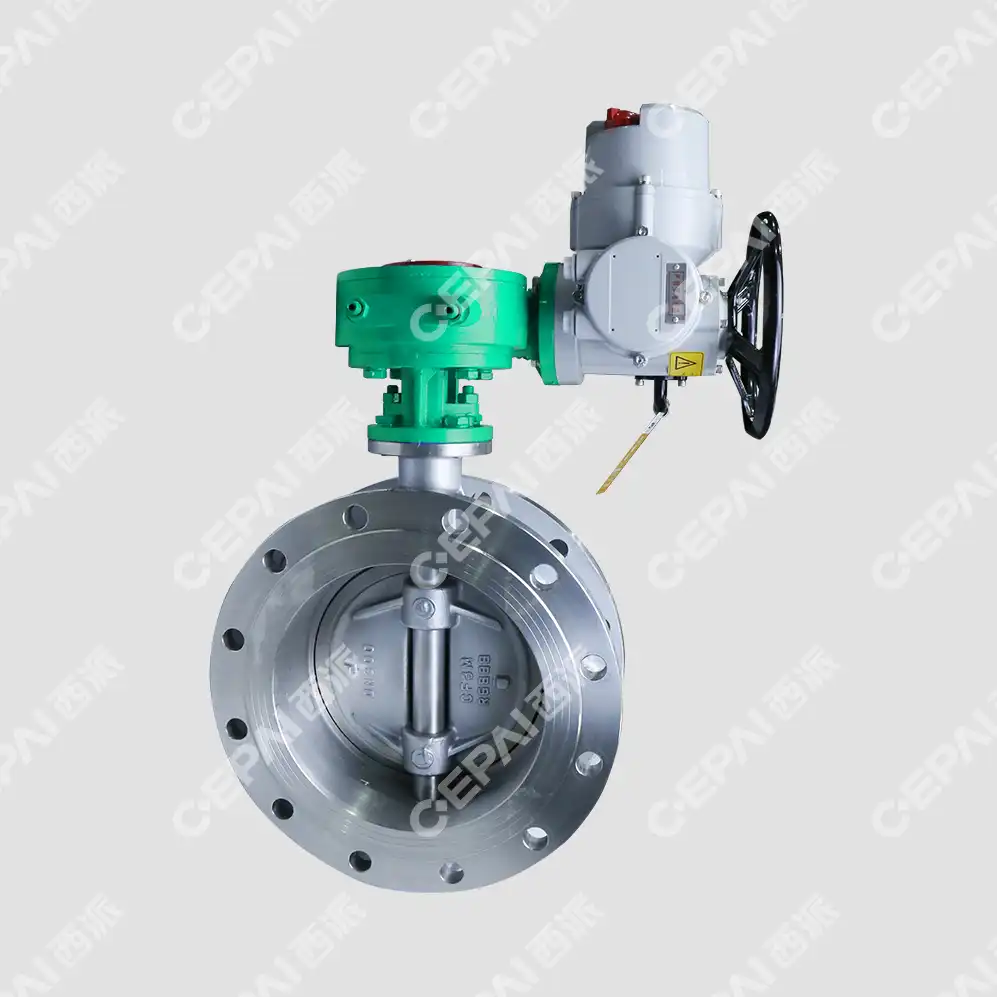Understanding Butterfly Valve Basics
Butterfly Valve Components
Butterfly valves consist of several key components that work together to control fluid flow. The main parts include the valve body, disc, seat, stem, and actuator. The valve body houses the internal components and connects to the pipeline. The disc is the circular plate that rotates to allow or restrict flow. The seat provides a seal between the disc and body when closed. The stem connects the disc to the actuator, which controls the valve's position. Understanding these components is essential for proper sizing and selection.
Operating Principles
Butterfly valves operate on a simple yet effective principle. As the actuator turns the stem, the disc rotates perpendicular to the flow. When fully open, the disc is parallel to the flow, offering minimal resistance. When closed, the disc is perpendicular to the flow, creating a tight seal. This quarter-turn operation allows for quick opening and closing, making butterfly valves ideal for applications requiring frequent adjustments or emergency shutoffs. The valve's design also permits bidirectional flow and can handle a wide range of temperatures and pressures.
Applications and Advantages
Butterfly valves find applications across various industries due to their versatility and efficiency. They're commonly used in water treatment plants, chemical processing facilities, oil and gas pipelines, and HVAC systems. The advantages of butterfly valves include their compact design, lightweight construction, and low pressure drop when fully open. They're also cost-effective and require minimal maintenance. In high-pressure applications, high-performance butterfly valves with metal seats can be employed. Understanding the specific advantages and limitations of butterfly valves will help you determine if they're suitable for your application during the sizing process.
Gathering Essential Data for Valve Sizing
Flow Rate Requirements
Determining the required flow rate is the first critical step in butterfly valve sizing. This involves calculating the volume of fluid that needs to pass through the valve in a given time period. Factors influencing flow rate include the system's design capacity, peak demand, and any variations in flow over time. For liquid applications, flow rate is typically expressed in gallons per minute (GPM) or liters per second (L/s). For gas or steam applications, it's often measured in standard cubic feet per minute (SCFM) or kilograms per hour (kg/h). Accurate flow rate data ensures that the selected valve can handle the system's demands without causing excessive pressure drop or flow restrictions.
Pressure Considerations
Pressure plays a crucial role in butterfly valve sizing. You'll need to consider both the upstream and downstream pressures in your system. The pressure differential across the valve affects its performance and determines the required actuator force. It's essential to account for the maximum and minimum operating pressures, as well as any potential pressure spikes or vacuum conditions. Pressure ratings are typically expressed in pounds per square inch (PSI) or bar. Ensure that the selected valve's pressure rating exceeds the maximum system pressure with an appropriate safety margin. Additionally, consider the valve's ability to withstand pressure in both flow directions if bidirectional operation is required.

Fluid Properties and Operating Conditions
The characteristics of the fluid being controlled significantly impact butterfly valve sizing. Key properties to consider include viscosity, density, temperature, and chemical composition. Viscosity affects the fluid's resistance to flow and can influence the required valve size. Density is crucial for calculating mass flow rates and determining actuator requirements. Temperature impacts material selection for valve components, especially seals and seats. Chemical composition helps in choosing appropriate materials to prevent corrosion or degradation. Operating conditions such as temperature fluctuations, potential for cavitation, and presence of particulates should also be factored into the sizing process. Gathering comprehensive data on fluid properties and operating conditions ensures that the selected butterfly valve can withstand the service conditions and provide reliable performance over its lifespan.
Performing Valve Sizing Calculations
Valve Coefficient (Cv) Determination
The valve coefficient, commonly referred to as Cv, is a critical factor in butterfly valve sizing. It represents the flow capacity of the valve and is defined as the number of gallons of water per minute that will flow through the valve with a pressure drop of 1 PSI. To determine the required Cv, you'll need to use the flow rate, pressure differential, and fluid properties in a sizing equation. For liquids, the equation is typically Cv = Q / (N * √(ΔP/G)), where Q is the flow rate, N is a numerical constant, ΔP is the pressure drop, and G is the specific gravity of the fluid. For gases and steam, more complex equations considering compressibility factors may be necessary. Once you've calculated the required Cv, you can select a valve size that meets or exceeds this value, ensuring adequate flow capacity.
Pressure Drop Analysis
Analyzing pressure drop across the butterfly valve is crucial for proper sizing and system performance. Excessive pressure drop can lead to inefficiencies, increased energy consumption, and potential cavitation issues. To calculate the pressure drop, you'll need to consider the valve's flow coefficient (Cv), flow rate, and fluid properties. The equation for pressure drop in liquids is ΔP = (Q / (N * Cv))² * G, where ΔP is the pressure drop, Q is the flow rate, N is a numerical constant, Cv is the valve coefficient, and G is the specific gravity. For gases and steam, more complex calculations involving expansion factors and critical pressure ratios may be required. It's important to ensure that the calculated pressure drop falls within acceptable limits for your system and doesn't exceed the valve's capabilities.
Actuator Sizing Considerations
Proper actuator sizing is essential for reliable butterfly valve operation. The actuator must provide sufficient torque to overcome the forces acting on the valve disc, including fluid dynamic torque, bearing friction, and packing friction. To size the actuator, you'll need to consider factors such as valve size, pressure differential, fluid properties, and safety factors. The required torque can be calculated using manufacturer-provided torque charts or specialized software. It's crucial to account for both breakaway torque (to unseat the valve from its closed position) and dynamic torque (to operate the valve throughout its range). Additionally, consider the actuator type (pneumatic, hydraulic, or electric) based on your system requirements and available power sources. Proper actuator sizing ensures smooth valve operation, precise control, and long-term reliability.
Conclusion
Mastering the art of butterfly valve sizing is crucial for optimizing fluid control systems across various industries. By following this step-by-step guide, you've learned to consider essential factors such as flow rate requirements, pressure considerations, and fluid properties. The process of determining valve coefficients, analyzing pressure drops, and sizing actuators ensures that your selected butterfly valve will perform efficiently and reliably. Remember that accurate sizing not only improves system performance but also extends equipment lifespan and reduces operational costs. As you apply these principles to your projects, you'll be well-equipped to make informed decisions and achieve superior flow control solutions.
Contact Us
Ready to elevate your fluid control systems with precision-engineered butterfly valves? CEPAI Group offers a comprehensive range of high-quality valves designed for optimal performance in demanding applications. Our expert team can assist you with valve sizing, selection, and customization to meet your specific needs. Experience the benefits of increased efficiency, reduced maintenance, and enhanced system reliability. Contact us today at cepai@cepai.com to discuss your butterfly valve requirements and discover how our solutions can drive your success.






